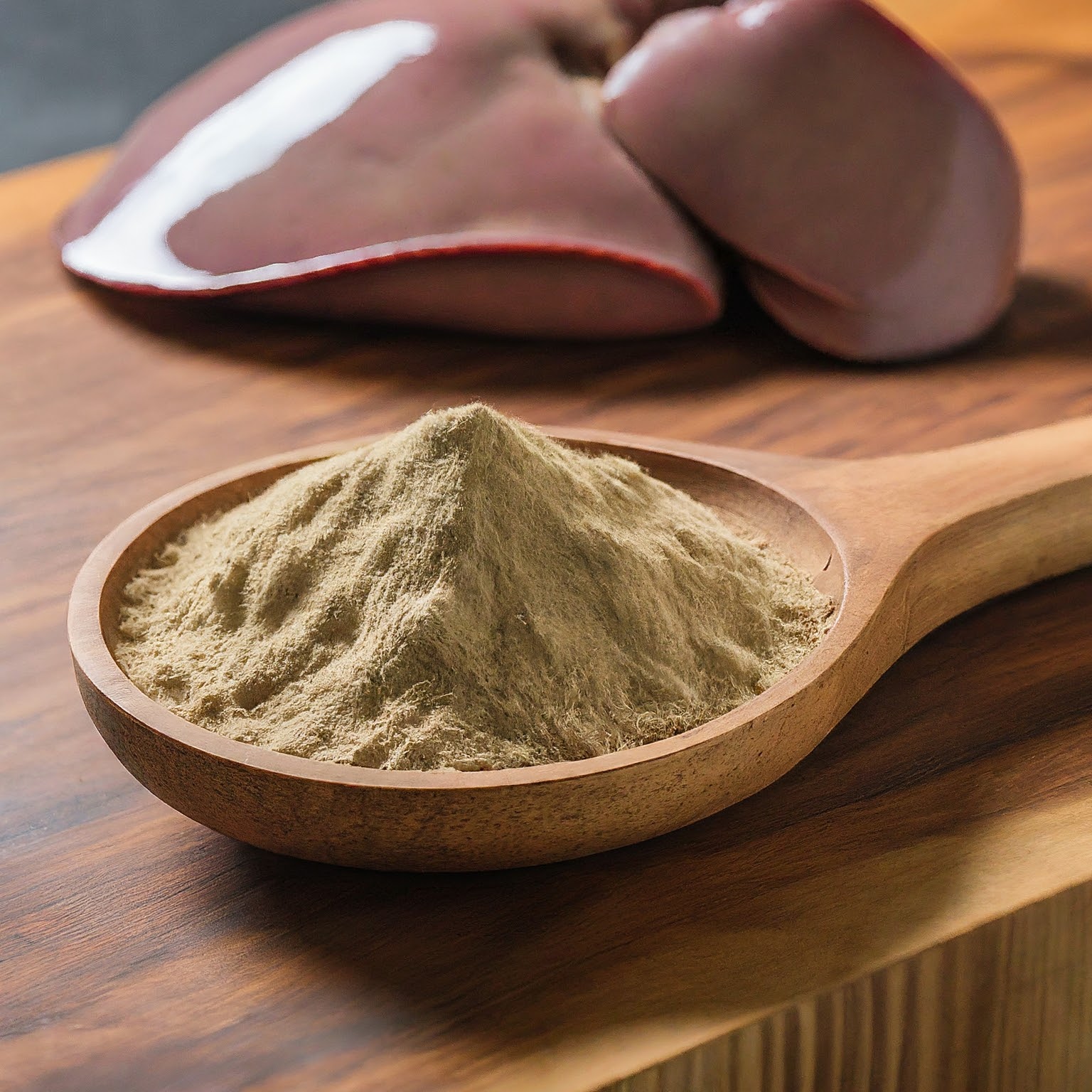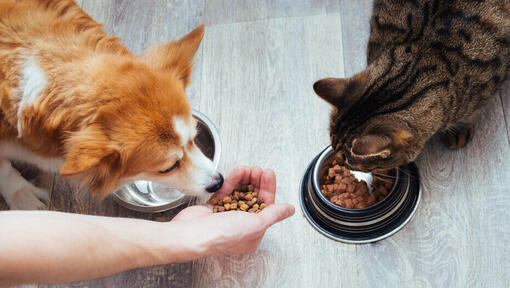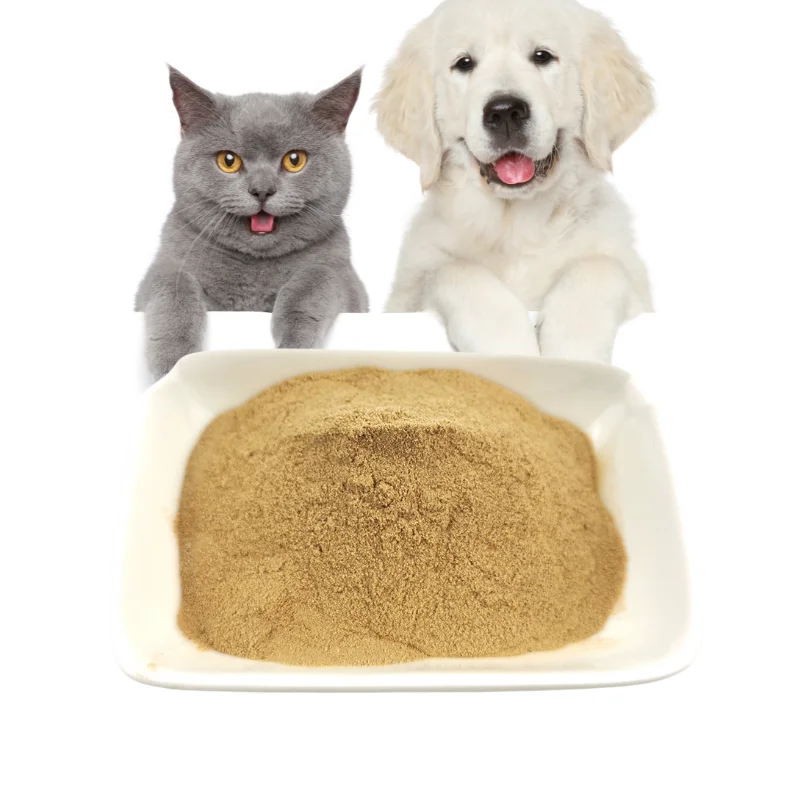When it's time to make great pet food, functional animal-derived proteins come into play. Hydrolyzed chicken liver powder is one such ingredient increasingly utilized in high-end pet diets and supplements. It is a nutrient-rich, extremely digestible source of protein, amino acids, and essential micronutrients.
Unlike raw chicken liver, hydrolyzed chicken liver powder is processed for enhanced digestibility and safety and offers a concentrated, bioavailable boost to dogs and cats.
In this blog, we'll explore how hydrolyzed chicken liver powder supports dog and cat nutrition, its key benefits, and how it fits into modern pet food formulations.

What Is Hydrolyzed Chicken Liver Powder?
Hydrolyzed chicken liver powder is made by enzymatically breaking down fresh chicken liver into smaller peptides and amino acids. This hydrolysis process:
- Reduces allergenicity
- Enhances absorption
- Improves palatability
Following hydrolysis, the liquid is dehydrated to provide a shelf-stable, fine powder which retains a high percentage of the nutritional value of chicken liver but is less taxing on the digestive system.

Top Benefits of Hydrolyzed Chicken Liver Powder for Dogs and Cats
1. High-Quality Protein for Muscle Well-being
Hydrolyzed chicken liver powder is composed of complete proteins, i.e., all the fundamental amino acids necessary for dogs and cats to:
- Build and repair muscles
- Support tissue maintenance
- Produce enzymes and hormones
Because hydrolysis is dissolving proteins into more digestible peptides, they are simpler to digest and utilize-ideal for animals with digestive sensitivities.
2. Highly Digestible for Sensitive Pets
Animals with food allergies or gastrointestinal illness often have trouble with whole protein sources. Hydrolyzed proteins are:
- Less likely to trigger an immune reaction
- Simpler to absorb in the intestines
- Capable of being utilized in hypoallergenic diets which are veterinarian-prescribed
This makes hydrolyzed chicken liver powder a perfect protein for sensitive or recovery diets.
3. Nature-Based Source of Essential Vitamins and Minerals
Chicken liver is a nutrient powerhouse, providing essential micronutrients that support whole-body health:
- Nutrient Benefits
- Vitamin A Eye health, immune function, skin repair
- Vitamin B12 Nerve health, red blood cell formation
- Iron Oxygen transport, energy metabolism
- Zinc Immune function, skin and coat health
- Copper Enzyme function, iron absorption
These nutrients are especially vital to growth, pregnancy, lactation, and senior pet nutrition.
4. Adds Palatability and Appetite
One of the most practical advantages of chicken liver powder is its own natural, meaty aroma and flavor that animals love. It's commonly used in pet food and treats to:
- Add taste to kibble or canned dog food
- Inspire appetite in finicky or sick animals
- Improve acceptance of prescription or drug-containing diets
Even a small amount can significantly increase feed intake-making it a great palatant.
5. Supports Liver Function and Detoxification
Chicken liver is a rich source of choline, a nutrient important for:
- Detoxification of the liver
- Metabolism of lipids
- Nervous system functioning
Supplementation with hydrolyzed chicken liver powder can maintain liver function in aging, stressed canine and feline patients with anorexia.
6. Suitable for All Life Stages
Because of its high protein and nutritional value, hydrolyzed chicken liver powder maintains:
- Puppies and kittens as they develop
- Pregnant and lactating females
- Adult and geriatric pets for tissue maintenance
- Sick or convalescent animals needing nutritional support
It's a multi-purpose ingredient for maintenance, therapeutic, and performance diets.

Nutritional Profile of Hydrolyzed Chicken Liver Powder (Typical Range)
| Component | Content (%) |
|---|---|
| Crude Protein | 60–70% |
| Fat | 10–15% |
| Moisture | <10% |
| Ash | 4–8% |
| Digestibility | >90% |
This super-concentrated formula makes it extremely effective for bulk feed manufacturing and specialty supplements.

How to Use Hydrolyzed Chicken Liver Powder in Pet Diets
Hydrolyzed chicken liver powder can be utilized in:
- Dry kibble or wet food as a functional ingredient
- Home-cooked meals to supplement protein and flavor
- Training treats and chews
- Nutraceutical powders or mixtures
As it is shelf-stable and heat-stable, it is ideal for domestic consumption or commercial manufacturing.
General Usage Guideline (Daily):
| Pet Size | Amount of Powder |
|---|---|
| Small (up to 10 kg) | 0.5–1 gram |
| Medium (10–25 kg) | 1–2 grams |
| Large (25+ kg) | 2–3 grams |
Get individual dosage recommendation from your veterinarian based on the health status of your pet.

Choosing the Best Hydrolyzed Chicken Liver Powder
For quality and safety, choose products that are:
| Feature | Why It Matters |
|---|---|
| Hydrolyzed enzymatically | Enhances digestibility and reduces allergens |
| Human-grade or pet-safe | Free from contaminants and harmful residues |
| Sustainably sourced | Ethically processed and environmentally safe |
| No artificial additives | Cleaner label, better health outcomes |
| Third-party tested | Ensures quality and purity |

Safety and Handling Hints
Hydrolyzed chicken liver powder is safe when used properly, but keep in mind:
Too much can lead to vitamin A toxicity (especially in small animals)
Use moderate, recommended amounts only
Keep in a dry, cool location in an airtight container
Introduce gradually to avoid GI upset in sensitive pets
![]()
Final Thoughts
Hydrolyzed chicken liver powder is a clean, digestible, and nutrient-packed ingredient that enhances pet diets naturally. Whether you're formulating food for sensitive pets, senior companions, or picky eaters, this functional protein delivers outstanding nutritional and palatability benefits.
With good digestibility, nutrient content, and natural palatability, it is little wonder that hydrolyzed chicken liver powder is taking center stage in modern dog and cat feeding.
References
Zentek, J. et al. (2002). The role of animal proteins in hypoallergenic diets. Veterinary Research Communications, 26(Suppl 1), 61–67.
Fascetti, A. J., & Delaney, S. J. (2012). Applied Veterinary Clinical Nutrition. Wiley-Blackwell.
National Research Council (2006). Nutrient Requirements of Dogs and Cats. The National Academies Press.










